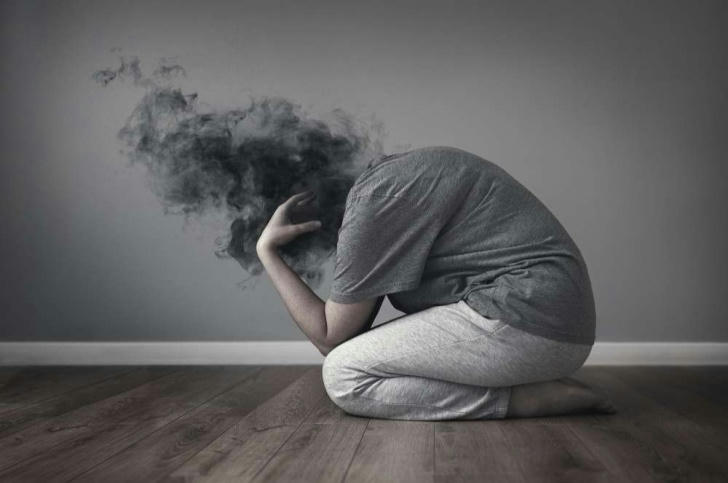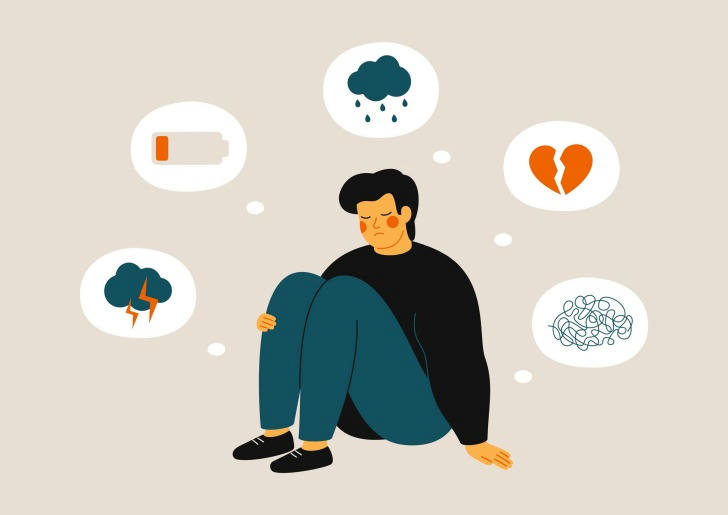Understanding Depression: A Comprehensive Guide
Depression is a common but serious mental health condition that affects millions of people across the world, including in the United States. It can impact a person’s thoughts, emotions, behavior, and physical health, often making daily life feel overwhelming. However, with the right understanding, support, and treatment, individuals can manage and recover from depression. This article aims to provide an in•depth, accessible overview of depression—its symptoms, causes, treatment options, and ways to cope.

1. What is Depression?
Depression, also known as major depressive disorder (MDD), is more than just feeling sad or down for a few days. It’s a long•lasting mood disorder characterized by persistent feelings of sadness, hopelessness, and loss of interest in activities that were once enjoyable. Depression can affect anyone, regardless of age, gender, or background.
2. Common Symptoms of Depression
Depression manifests in various ways, both emotionally and physically. Symptoms may include:
• Persistent Sadness: Feeling sad, empty, or hopeless for an extended period (often most of the day).
• Loss of Interest or Pleasure: Losing interest in activities that were once enjoyable or engaging.
• Fatigue and Low Energy: Feeling constantly tired, even after rest, or having a lack of energy to do everyday tasks.
• Changes in Appetite or Weight: Either eating too much or losing appetite, which can lead to significant weight changes.
• Sleep Disturbances: Experiencing insomnia (difficulty sleeping) or oversleeping (sleeping too much).
• Difficulty Concentrating: Having trouble focusing on tasks, making decisions, or thinking clearly.
• Feelings of Guilt or Worthlessness: Excessive self•criticism or feeling like a failure.
• Physical Symptoms: Headaches, stomach issues, or muscle pain with no clear physical cause.
• Suicidal Thoughts: In severe cases, people may have thoughts about death or suicide.
These symptoms can vary in severity and duration. For a diagnosis of depression, symptoms must last for at least two weeks and interfere with daily functioning.
3. What Causes Depression?
The causes of depression are complex and can vary from person to person. There are several factors that contribute to the development of depression, including:
• Genetics: A family history of depression or other mental health conditions can increase the risk of developing depression.
• Brain Chemistry: Imbalances in neurotransmitters (chemical messengers in the brain) such as serotonin, dopamine, and norepinephrine can play a role in depression.
• Hormonal Changes: Hormonal fluctuations caused by pregnancy, childbirth, menopause, or thyroid problems can trigger depressive episodes.
• Trauma and Stress: Experiencing major life changes, trauma (such as abuse, the death of a loved one, or financial strain), or prolonged stress can lead to depression.
• Chronic Illness or Pain: Living with a chronic condition such as heart disease, cancer, or arthritis can increase the risk of depression.
• Social Isolation: Lack of social support or feeling disconnected from others can contribute to feelings of loneliness and depression.
While depression may not always have an identifiable cause, it is often a combination of genetic, biological, environmental, and psychological factors.

4. Types of Depression
There are several types of depression, each with different characteristics and symptoms. Some of the most common include:
• Major Depressive Disorder (MDD): The most common form, characterized by long•term feelings of sadness, lack of interest, and a variety of physical and emotional symptoms.
• Persistent Depressive Disorder (PDD): Also known as dysthymia, this type involves chronic, less severe depression lasting for at least two years.
• Bipolar Disorder: This condition involves extreme mood swings that include depressive episodes as well as manic or hypomanic (elevated or irritable) episodes.
• Seasonal Affective Disorder (SAD): A type of depression that occurs during certain times of the year, typically during the winter months when there is less sunlight.
• Postpartum Depression: A type of depression that occurs in some women after childbirth, characterized by feelings of sadness, fatigue, and difficulty bonding with the baby.
• Psychotic Depression: A severe form of depression where a person experiences delusions or hallucinations along with depressive symptoms.
5. Treatment for Depression
While depression can feel overwhelming, it is treatable. Various treatment options are available, depending on the severity of the condition and individual needs.
• Psychotherapy (Talk Therapy): Speaking with a licensed therapist can help individuals identify and address negative thought patterns, cope with stress, and develop healthier behaviors. Cognitive Behavioral Therapy (CBT) is one of the most widely used therapies for treating depression.
• Medications: Antidepressant medications can help balance the brain's chemicals and alleviate the symptoms of depression. The most common types include:
• Selective Serotonin Reuptake Inhibitors (SSRIs): These are often the first•line treatment for depression (e.g., Prozac, Zoloft).
• Serotonin and Norepinephrine Reuptake Inhibitors (SNRIs): These work on both serotonin and norepinephrine (e.g., Effexor, Cymbalta).
• Tricyclic Antidepressants (TCAs) and Monoamine Oxidase Inhibitors (MAOIs): These are older classes of antidepressants, typically used when other medications are not effective.
• Lifestyle Changes: Regular exercise, a balanced diet, and good sleep hygiene can help improve mood and overall well•being.
• Support Groups: Sharing experiences and connecting with others going through similar struggles can provide emotional support and reduce feelings of isolation.
• Electroconvulsive Therapy (ECT): In severe cases of depression that do not respond to other treatments, ECT may be considered as an option. It involves brief electrical stimulation of the brain while the patient is under anesthesia.
• Transcranial Magnetic Stimulation (TMS): A newer non•invasive treatment that uses magnetic fields to stimulate areas of the brain involved in mood regulation.
6. Coping with Depression
In addition to professional treatment, there are various coping strategies that can help individuals manage depression:
• Reach Out for Help: Talking to a friend, family member, or therapist about what you're going through can provide emotional support and make you feel less alone.
• Practice Mindfulness: Techniques such as meditation and mindfulness can help you stay in the present moment, reducing anxiety and stress.
• Set Realistic Goals: Break down large tasks into smaller, more manageable steps, and celebrate small victories along the way.
• Stay Active: Even light physical activity, like walking, can improve mood by releasing endorphins, which are natural mood enhancers.
• Avoid Alcohol and Drugs: Substance use can worsen depression and interfere with treatment.

7. When to Seek Help
Depression is a serious condition that can worsen without proper treatment. It’s important to seek professional help if:
• Your symptoms are persistent and interfere with daily life.
• You have thoughts of self•harm or suicide.
• You experience significant changes in your behavior, mood, or physical health.
Conclusion
Depression is a common mental health condition that affects millions of people, but it is treatable. Understanding its symptoms, causes, and available treatments is the first step toward recovery. Whether through therapy, medication, lifestyle changes, or a combination of these, individuals with depression can regain control over their lives. Remember, you are not alone, and help is available.
If you think you may be experiencing depression, don't hesitate to reach out to a healthcare provider to discuss your symptoms and explore your treatment options. Taking that first step toward help can make all the difference.
